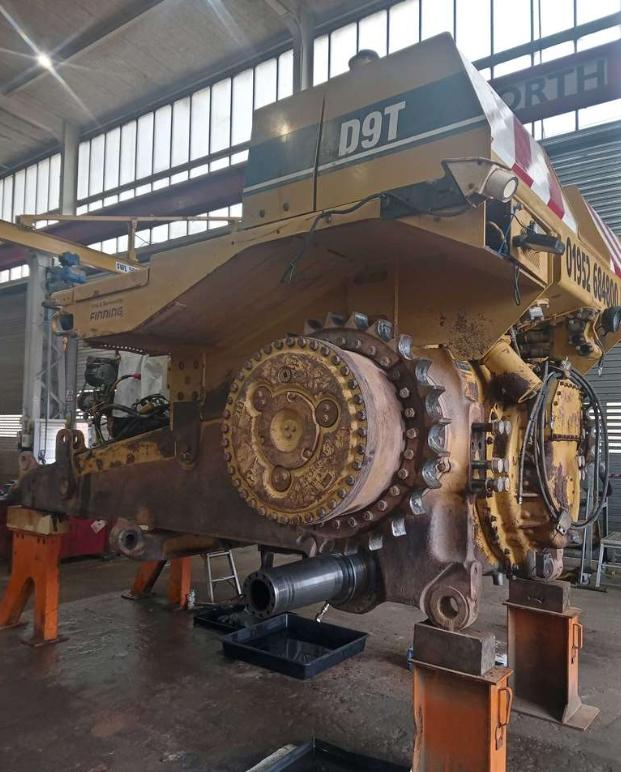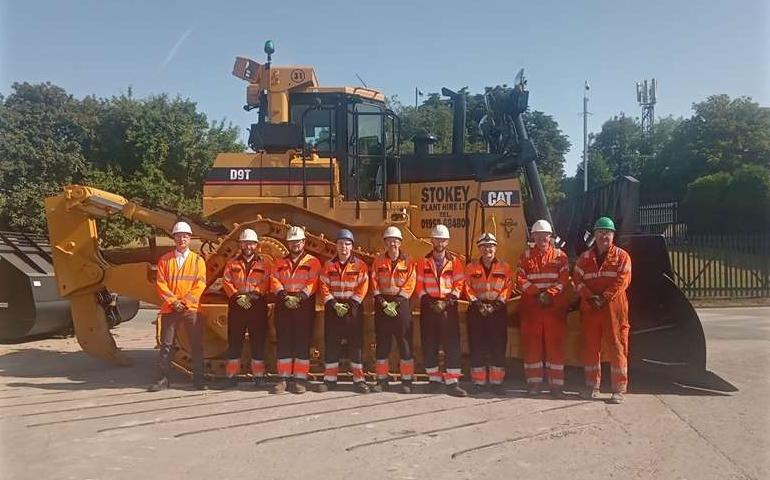Construction equipment manufacturers are aiming to achieve their sustainability goals through ambitious strategies to enhance the production of remanufactured components and the volume of certified rebuilds facilitated by dealers. However, the question remains whether these efforts will suffice to facilitate a complete transition to a circular economy.
In late 2021, Sarah Jones, the Managing Director of UK-based plant hire company Stokey, initiated a search for potential replacements for the company’s long-serving Caterpillar D9 bulldozer. The original purchase of the bulldozer took place 14 years ago, and over this time, it accumulated 22,000 machine hours while being utilized in quarries across the British Midlands.
Eager to minimize the risk of breakdowns linked to older equipment, initially, the company intended to replace the 50,000kg tracked machine with a more recent model and either sell or dispose of the older one.
However, driven by the increasing trend in businesses to lower carbon emissions and enhance environmental impact, alongside a desire to reduce expenses, Jones, like numerous other customers, decided to have the local Caterpillar dealer, Finning, dismantle and refurbish the machine instead. This involved substituting worn components with previously used ones that had been sent back to a Cat factory and restored through remanufacturing processes.
Opting for a certified powertrain (CPT) rebuild, a choice made by Stokey, involved replacing the transmission, engine, differential, and final drives with remanufactured alternatives whenever feasible. This decision not only saved the customer a substantial £550,000 (€637119,38) in contrast to purchasing a new machine but also contributed to saving the environment by preventing the emission of thousands of tonnes of carbon through reduced energy consumption and resource utilization.
“We’re revitalizing an older machine, granting it a fresh and renewed purpose, instead of sending it for resale or, worse yet, for dismantling and scrapping,” Jones asserts while standing confidently beside the refurbished equipment, wearing a hard hat and a high-visibility orange jacket.
Undoubtedly, the practice of reusing, repairing, and refurbishing costly machinery is a longstanding tradition within the construction equipment sector. For more than a century, independent repair shops, equipment dealers, and manufacturers have been providing diverse levels of repairs and restoration services.
However, in recent times, companies have elevated the once-established industry standard by directly aligning it with their broader sustainability goals. By reintroducing existing products and integrating innovations that contribute to achieving net-zero and net-neutral objectives throughout supply chains, organizations can realize more immediate value while enhancing their commitment to sustainability.
Caterpillar’s dealers have been implementing a certified rebuilds program since 1985. Through this initiative, they perform more than 350 tests and inspect around 7,000 components on each machine, delivering customers a machine that’s comparable to new and comes with a Cat warranty.
Certified Rebuilds
According to Mark Holden, Product Support Account Manager at Finning UK & Ireland, Stokey’s rebuild was accomplished by reusing the most durable components of the machine and replacing only the necessary parts. This approach resulted in a cost of £300,000 (€339,500) for the rebuild, significantly less than the £850,000 (€984639,04) required to purchase a new equivalent D9 bulldozer. Additionally, the rebuilt dozer has a reduced environmental impact in terms of raw materials and carbon emissions associated with its production.
“Although the engine, transmission, and other critical components will require replacement before encountering operational problems, the primary chassis and body of the machine remain structurally sound. This allows for a thorough restoration that brings it back to its original condition, enabling it to be utilized repeatedly,” he explains.

Remanufacturing is increasingly gaining significance in the sustainability objectives of both OEMs and their dealer networks.
This approach implies that instead of substituting the worn engine of the D9 with a brand new one, which consumes additional precious materials and resources, engineers can access a previously owned engine from a former customer. These engines are sent back to the manufacturer, restored to their original factory state, and then returned to the dealer for resale. They are offered at a more affordable price compared to new engines, while still delivering equivalent performance and backed by a manufacturer’s warranty.
In addition to holding the title of the world’s largest construction equipment manufacturer, Caterpillar is also a major player in the field of remanufacturing, having formally provided this service since 1973. Even prior to that, the company proudly highlights its history of conducting refurbishments and repairs. Caterpillar points out that one of the original tractors constructed by its predecessor company, Holt Manufacturing Company, back in 1917, is still functioning to this day. Notably, components can undergo the remanufacturing process up to six times.
What is remanufacturing?
In the past four decades, Caterpillar reports that its dealers have successfully rebuilt approximately 37,000 machines, powertrains, and components. Just in the year 2021, these efforts led to the return of 127 million pounds of material to Cat’s remanufacturing facilities for processing. The sales price of Cat Reman products incorporates a ‘core deposit’ equivalent to the value of the materials, creating a financial motivation for customers to eventually return the component for remanufacturing.
In 2021, the corporation unveiled a sustainability objective to achieve a 25% rise in sales and revenue from Cat Reman by 2030 compared to the levels of 2018. This initiative is driven by both environmental concerns and strategic considerations.
According to Cat, bringing a cylinder head back to its original factory state consumes 85% less energy compared to producing a new one, resulting in a reduction of 61% in greenhouse gas emissions. Additionally, the remanufacturing process utilizes 86% less water and necessitates 85% less material. These remanufactured engines are subsequently supplied to dealers, who incorporate them into extensive rebuilding efforts.
Furthermore, the company approximates that approximately 35% of its expenses are attributed to overheads, while the predominant portion (65%) pertains to material costs. As a result, reclaiming materials presents a significant competitive advantage for the company compared to its rivals.
The Ellen MacArthur Foundation, a UK-based charitable organization established by the former British yachtswoman to advocate for the circular economy, highlights both Caterpillar and aerial platform manufacturer JLG as instances of companies effectively transitioning towards a circular economy through the adoption of innovative business models.
The foundation references Caterpillar for offering customers various options for extending the life of their products, such as remanufacturing, rebuilding, and second-hand sales. The circular economy framework emphasizes the significance of designing efficient products and systems rather than solely focusing on efficiency.
“Caterpillar has embraced this approach in their product design, shifting their focus from simply using less material to designing products with the intention of being remanufactured multiple times,” the foundation explains.
Caterpillar takes pride in its equipment being ‘crafted for restoration.’ A frequently mentioned illustration is an engine block featuring a detachable sleeve within the cylinder bore. Upon recovery, this component can be replaced to restore the engine’s performance to its original state. In the past, remanufacturing engine blocks involved re-boring the cylinder and employing a larger piston, a process that could only be repeated up to three times before compromising product quality.



